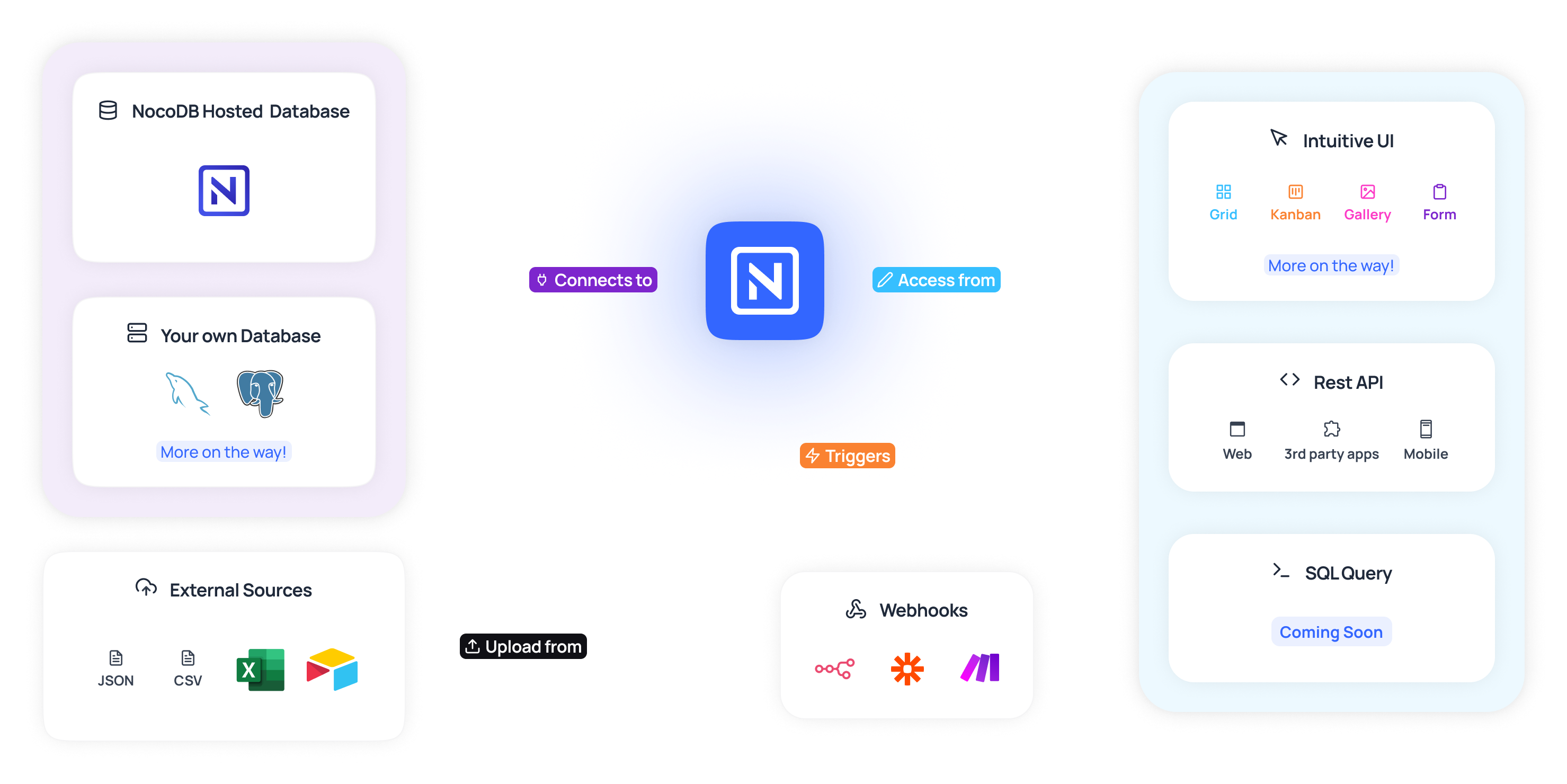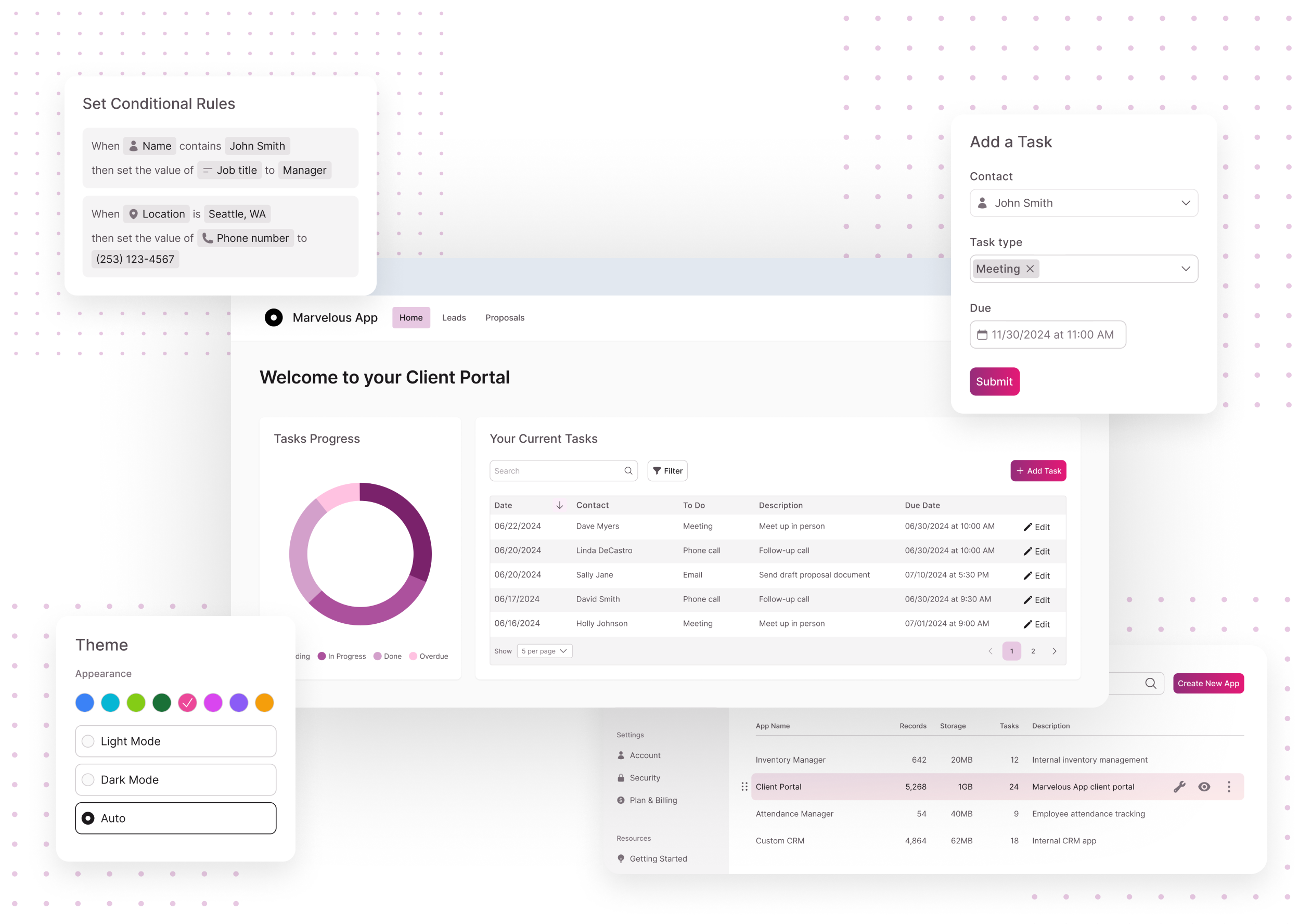Unlock the Power of No-Code for Open Platform Database Development
Unlock the Power of No-Code for Open Platform Database Development
Blog Article
A Comprehensive Overview to Implementing Scalable Databases Without the Requirement for Coding Knowledge
In the modern landscape of information administration, the capacity to carry out scalable data sources without coding expertise is becoming increasingly important for organizations of all sizes. This overview intends to light up the procedure, concentrating on easy to use tools and user-friendly interfaces that demystify database setup. By taking a look at vital attributes, reliable approaches for execution, and ideal methods for ongoing monitoring, we will attend to exactly how even non-technical individuals can confidently navigate this facility surface. What are the crucial components that can really equip these users to leverage scalable data sources efficiently? The answers might redefine your technique to information administration.
Comprehending Scalable Databases
In the world of modern data administration, scalable databases have actually become an essential remedy for companies seeking to manage increasing quantities of information effectively. These databases are created to accommodate development by permitting for the seamless addition of resources, whether via horizontal scaling (including more devices) or upright scaling (upgrading existing devices) This adaptability is necessary in today's fast-paced digital landscape, where information is produced at an extraordinary price.
Scalable data sources typically make use of dispersed designs, which make it possible for data to be spread throughout numerous nodes. This distribution not only improves efficiency yet also gives redundancy, guaranteeing information schedule also in case of equipment failings. Scalability can be an important factor for various applications, including ecommerce platforms, social networks networks, and big data analytics, where individual need can rise and fall significantly.
Additionally, scalable databases typically include durable data consistency versions that stabilize efficiency and reliability. Organizations needs to consider their details needs, such as read and create rates, information honesty, and mistake resistance when picking a scalable data source service. Ultimately, comprehending the underlying principles of scalable databases is vital for companies intending to prosper in a progressively data-driven globe.
Secret Features to Look For
When evaluating scalable databases, several vital attributes are extremely important to making certain ideal performance and reliability. First and foremost, think about the design of the database. A distributed architecture can boost scalability by permitting information to be kept throughout multiple nodes, promoting smooth data access and handling as demand rises.
One more vital feature is information partitioning, which allows efficient monitoring of big datasets by dividing them right into smaller, extra workable pieces (no-code). This strategy not only boosts performance yet likewise streamlines resource allocation
In addition, try to find robust duplication capabilities. This feature makes sure data redundancy and high schedule, decreasing downtime throughout maintenance or unanticipated failures.
Efficiency monitoring devices are also important, as they provide real-time insights right into system health and wellness and functional efficiency, enabling timely changes to keep optimal performance.

User-Friendly Data Source Devices
Simpleness is a vital aspect in the layout of Learn More user-friendly database tools, as it improves availability for users with differing levels of technical proficiency. no-code. These devices focus on intuitive user interfaces, allowing users to produce, manage, and inquiry databases without calling for substantial programming expertise
Key attributes normally include drag-and-drop capability, visual information modeling, and pre-built themes that streamline the configuration procedure. Such tools usually provide guided tutorials or onboarding procedures that promote individual involvement and lower the knowing contour. Additionally, seamless assimilation with prominent data sources and solutions ensures that individuals can conveniently import and export data, even more streamlining operations.

Additionally, robust support and area resources, such as forums and documents, improve the user experience by giving assistance when required. Generally, easy to use database devices empower companies to harness the power of scalable databases, making information administration obtainable to everybody involved.
Step-by-Step Implementation Overview
How can companies efficiently apply scalable databases to check here fulfill their expanding data demands? The process starts with identifying certain data demands, consisting of the quantity, variety, and rate of data that will be refined. Next off, organizations must evaluate easy to use data source tools that supply scalability features, such as cloud-based options or took care of database services.
When the right tool is picked, the next step entails configuring the database atmosphere. This consists of establishing up circumstances, defining individual approvals, and developing data structures that line up with service purposes. Organizations should after that move existing information right into the new system, guaranteeing information honesty and marginal disruption to operations.
Post-migration, carrying out extensive screening is crucial; this includes performance testing under numerous load problems to guarantee the system can handle future growth - no-code. In addition, it is essential to train staff on the data source monitoring user interface to help with smooth use
Ideal Practices for Management
Reliable monitoring of scalable data sources requires a tactical technique that prioritizes recurring tracking and optimization. To attain this, organizations need to carry out robust monitoring devices that give real-time understandings right into data source efficiency metrics, such as inquiry response times, resource application, and transaction throughput. Consistently examining these metrics can aid determine traffic jams and locations for enhancement.

Regular back-ups and calamity you can try this out healing plans are necessary to guard information integrity and availability. Developing a routine for evaluating these backups will certainly make certain a reliable healing procedure in instance of an unexpected failing.
Furthermore, efficiency adjusting ought to be a continual procedure. Adjusting indexing approaches, enhancing inquiries, and scaling resourcesâEUR" whether up and down or horizontallyâEUR" will certainly help keep optimal performance as usage demands advance.
Last but not least, promoting a society of understanding sharing among staff member will certainly allow constant understanding and adaptation, guaranteeing that the management of scalable databases stays efficient and reliable gradually.
Final Thought
In conclusion, the execution of scalable data sources can be properly accomplished without coding knowledge through the use of instinctive user interfaces and user-friendly devices. By sticking to the laid out strategies for arrangement, data migration, and performance screening, people can navigate the complexities of data source administration effortlessly. Highlighting ideal practices for continuous upkeep and collaboration additional improves the capability to manage scalable databases effectively in a quickly progressing data-driven atmosphere.
In the contemporary landscape of information administration, the capability to execute scalable data sources without coding competence is ending up being increasingly necessary for organizations of all dimensions.In the world of contemporary data monitoring, scalable data sources have emerged as an important service for organizations looking for to manage enhancing quantities of info efficiently.In addition, scalable databases frequently feature durable information uniformity versions that stabilize efficiency and integrity.Just how can organizations efficiently carry out scalable databases to satisfy their expanding data needs? Next, organizations should examine easy to use data source tools that offer scalability attributes, such as cloud-based options or managed database services.
Report this page